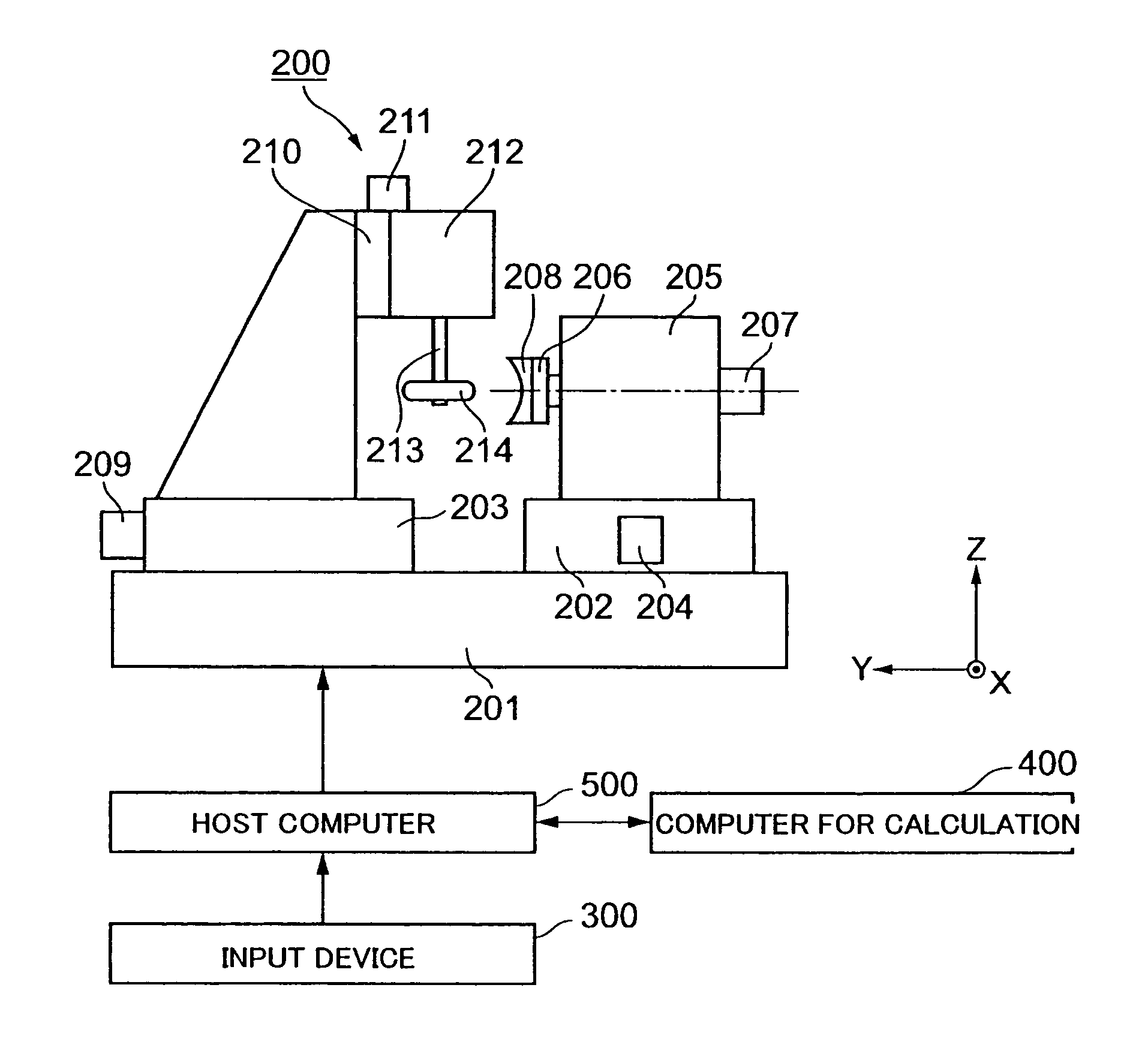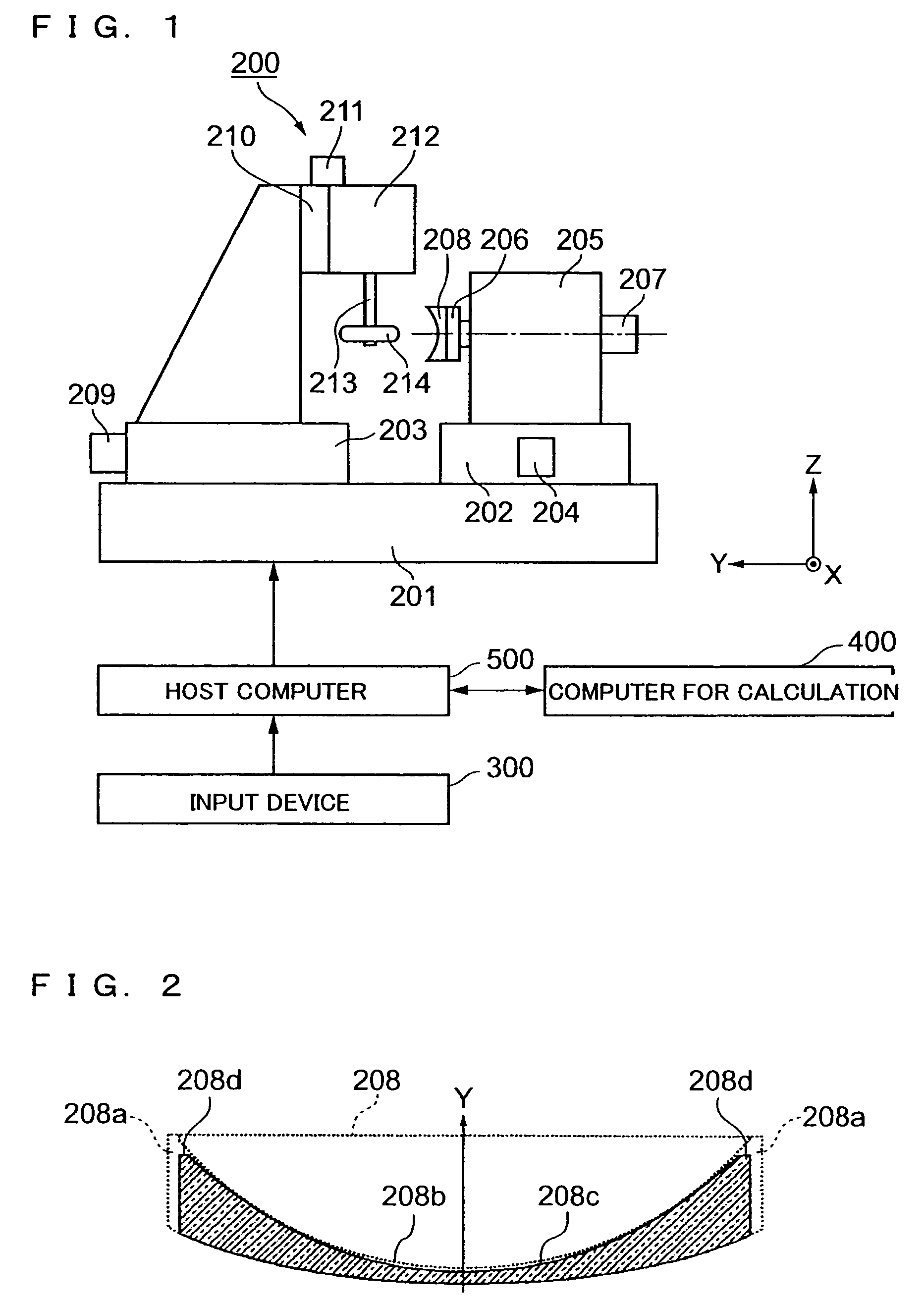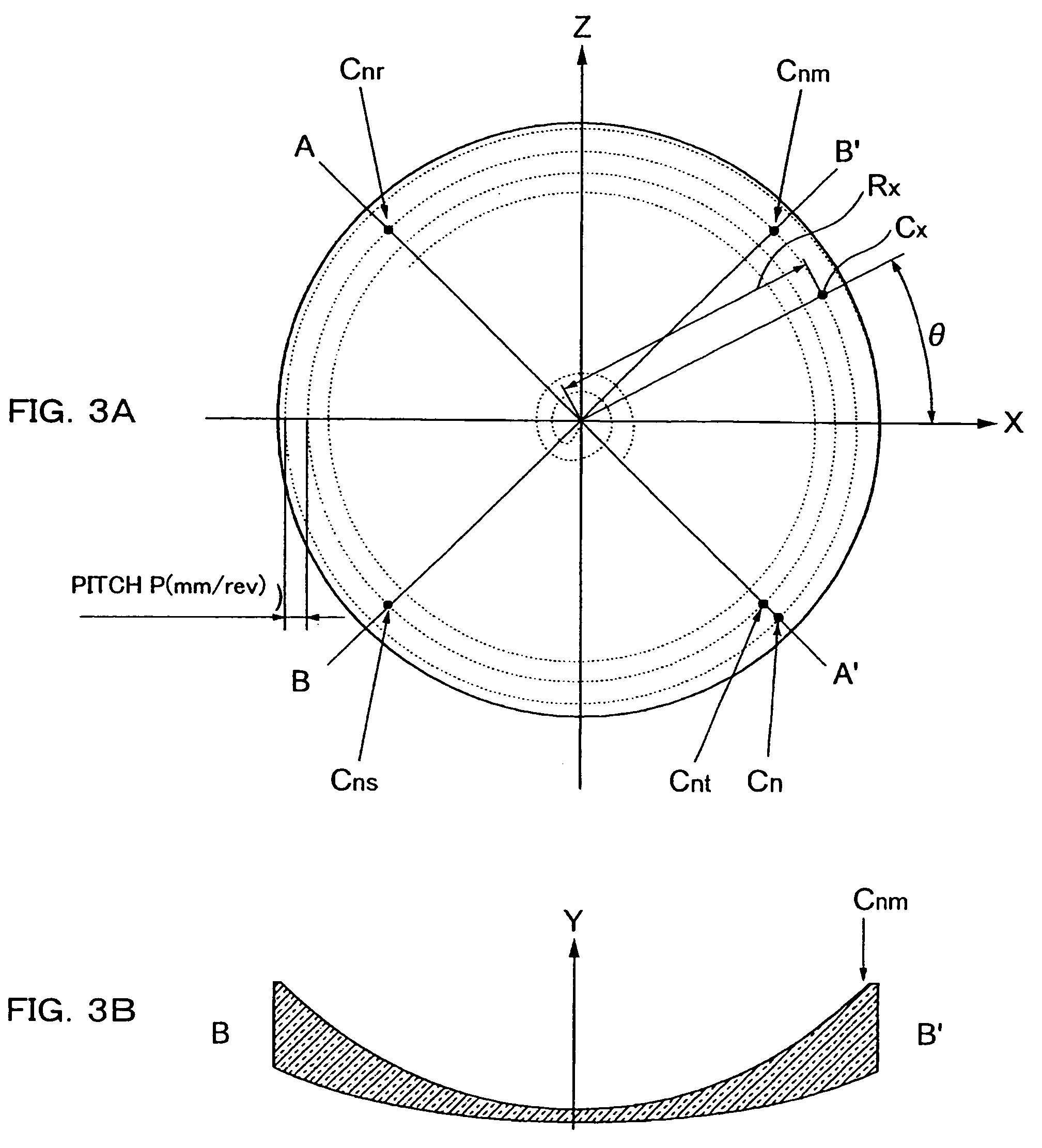Aspherical surface processing method, aspherical surface forming method and aspherical surface processing apparatus
a processing method and surface technology, applied in the direction of feeding apparatus, automatic control devices, programme control, etc., can solve the problems of large inertial force, large size, and complicated control of both tables, and achieve high accuracy
- Summary
- Abstract
- Description
- Claims
- Application Information
AI Technical Summary
Benefits of technology
Problems solved by technology
Method used
Image
Examples
embodiment 1
[0070]The first embodiment of the aspherical surface processing method according to an embodiment of the present invention for processing a spectacle lens (hereinafter referred to as “lens”), for example, is described in conjunction with FIGS. 3A, 3B, 4A, 4B, 5, 6 and 7. FIG. 3A is a schematic view illustrating a processed surface of the lens in the aspherical surface processing method. FIG. 3A is a front surface of the lens, while FIG. 3B is a cross-sectional view of the lens taken along a line B–B′ in FIG. 3A. FIG. 4A is a conceptual view illustrating three-dimensional coordinates of a tip surface of a rotational tool divided in a grid pattern. FIG. 4A is an elevation view, a plane view, and a side view with each showing a positional relationship between the workpiece and the rotational tool, while FIG. 4B is an enlarged view of the rotational tool shown in FIG. 4A. FIG. 5 is a conceptual view illustrating three-dimensional coordinates on a surface of the workpiece and a surface o...
embodiment 2
[0084]An aspherical surface processing method of a second embodiment according to the present invention is herein described in conjunction with FIGS. 8A, 8B, and 9. FIG. 8A is a schematic view illustrating a processed surface of a lens in an aspherical surface processing method according to a second embodiment. FIG. 8A is a front view of the lens, while FIG. 8B is a cross-sectional view of the lens taken along a line B–B′ in FIG. 8A. FIG. 9 is a conceptual view illustrating the aspherical surface processing method.
[0085]In the aspherical surface processing method of the second embodiment, the whetstone of the rotational tool 214 grinds while forming a spiral track as illustrated in FIG. 8. In this embodiment, the distance from the rotation center of the workpiece 208 to the tip center axis of the rotational tool 214 (Rx) is increased with a predetermined feed pitch. More specifically, the grinding is started at a processing point located at or adjacent to the rotation center of the ...
embodiment 3
[0099]An aspherical surface processing method of a third embodiment of the present invention is now described with reference to FIGS. 10A and 10B. FIG. 10A is a schematic view illustrating a rotational tool 214 in the aspherical surface processing method of the third embodiment. FIG. 10A is a front view of the rotational tool 214, while FIG. 10B is a side view of the rotational tool 214.
[0100]In the aspherical surface processing method of the third embodiment, a pair of cutters 216 as cutting tools each of which is provided on a circumference side of the rotational tool 214 are opposed to each other with its center interposed between the cutters 216.
[0101]Additionally, the aspherical surface processing method of the third embodiment is similar to the grinding method in which the rotational tool 214 uses a whetstone as described in the above first and second embodiments.
[0102]According to this embodiment as explained above in detail, advantages similar to those shown in the first and...
PUM
| Property | Measurement | Unit |
|---|---|---|
| surface roughness Rmax | aaaaa | aaaaa |
| surface roughness Rmax | aaaaa | aaaaa |
| surface roughness Rmax | aaaaa | aaaaa |
Abstract
Description
Claims
Application Information
 Login to View More
Login to View More - R&D
- Intellectual Property
- Life Sciences
- Materials
- Tech Scout
- Unparalleled Data Quality
- Higher Quality Content
- 60% Fewer Hallucinations
Browse by: Latest US Patents, China's latest patents, Technical Efficacy Thesaurus, Application Domain, Technology Topic, Popular Technical Reports.
© 2025 PatSnap. All rights reserved.Legal|Privacy policy|Modern Slavery Act Transparency Statement|Sitemap|About US| Contact US: help@patsnap.com



